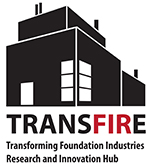The efficient use of ground granulated blast furnace slag (GGBS) in reducing global emissions
A draft copy of a cross industry paper, which included contributions from TranFIRe researcher Michal Drewniok, has reported the current and future levels of availability of ground granulated blast furnace slag (GGBS) in concrete and has concluded that GGBS is a highly utilised and constrained material. As such, it was noted that any local increase in the amount of clinker substituted with imported GGBS is unlikely to decrease global emissions. GGBS is a co-product of the iron and steel industry obtained by water-cooling and grinding blast furnace slag. It is used as a supplementary cementitious material (SCM) in concrete due to its cementitious properties, which enhance the long-term strength and durability. The technical benefits of including GGBS in concrete are now well understood and documented, but in recent years GGBS has also been a subject of discussion among concrete producers for its ability to partially replace Portland cement clinker [...]



